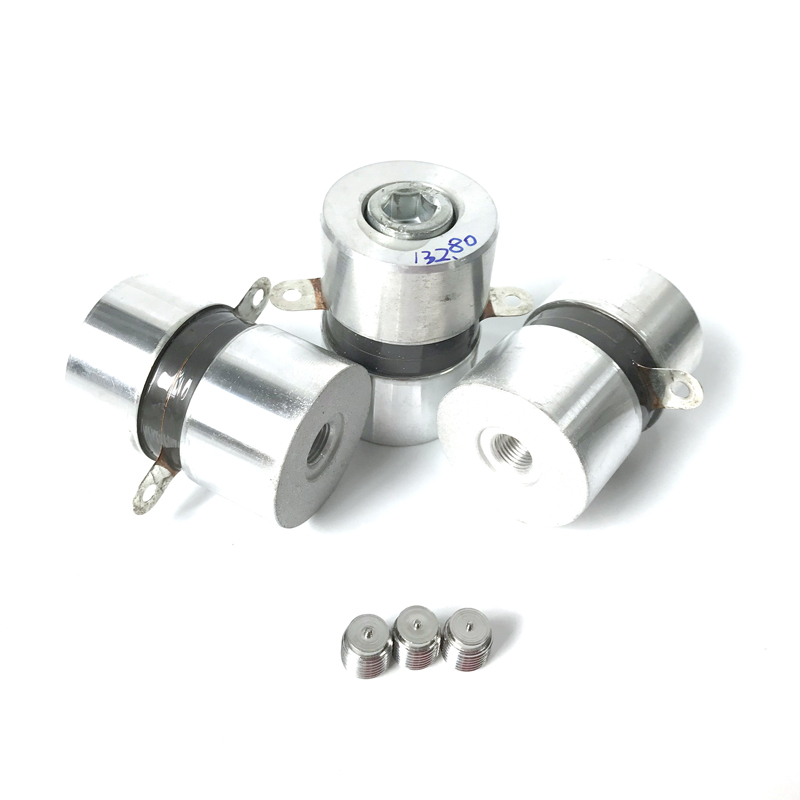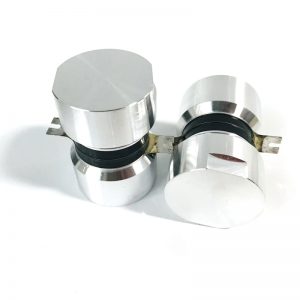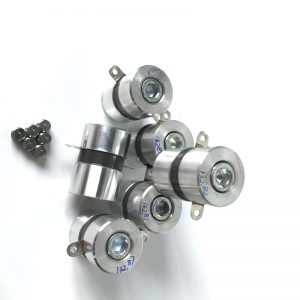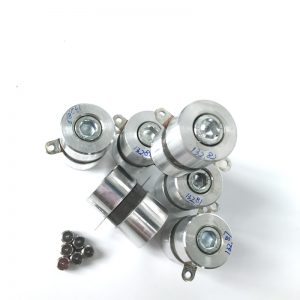 The design of a multi frequency ultrasonic cleaning transducer requires consideration of multiple factors, including operating frequency, power, vibration mode, material, and structure.
The design of a multi frequency ultrasonic cleaning transducer requires consideration of multiple factors, including operating frequency, power, vibration mode, material, and structure.
1. Working frequency: The working frequency of the multi frequency ultrasonic cleaning transducer needs to be selected within a certain range to ensure the best cleaning effect and safety. When selecting the working frequency, factors such as the physical properties of the medium, cleaning requirements, and equipment cost need to be considered.
2. Power: The power of the multi frequency ultrasonic cleaning transducer needs to be selected according to actual needs. Low power cannot achieve the desired cleaning effect, while high power may cause equipment damage or affect the stability of the cleaning medium.
3. Vibration mode: The vibration mode of a multi frequency ultrasonic cleaning transducer has a significant impact on the cleaning effect and the working efficiency of the transducer. Different vibration modes can lead to different motion trajectories and friction effects of particles in the medium, thereby affecting the cleaning effect. Therefore, when choosing the vibration mode, it is necessary to consider the actual cleaning requirements and medium properties.
4. Materials and structure: The materials and structure of multi frequency ultrasonic cleaning transducers have a significant impact on their working performance and service life. When selecting materials, factors such as acoustic performance, mechanical performance, and corrosion resistance need to be considered. When designing the structure, factors such as installation and fixation methods need to be considered to ensure its stability and reliability.
The manufacturing of multi frequency ultrasonic cleaning transducers requires multiple processes, including material preparation, cutting, drilling, welding, assembly, and testing. In the manufacturing process, it is necessary to ensure the quality and accuracy of each process to ensure the performance and quality of the final product. At the same time, safety issues need to be taken into consideration during the manufacturing process, and corresponding protective measures should be taken to avoid accidents.
| Type | Full length(mm) | weight(g) | FR (khz) | impedance(Ω) | CP(Pf)±10% | power(w) |
| PT-UT38/80 KHZ P 4 | 61 | 330 | 38/80 | <35 | 4800 | 50 |
| PT-UT40/100KHZ P 4 | 54 | 280 | 41/100 | <50 | 5200 | 40 |
| PT-UT50K P4 | 42 | 135 | 50 | <35 | 3200 | 25 |
| PT-UT28/83/130 KHZ P 4 | 70 | 480 | 28/83/130 | <30 | 5000 | 30 |
| PT-UT25/45/80KHZ P4 | 78 | 540 | 25/45/80 | <30 | 5000 | 30 |
| PT-UT33/89/135KHZ P4 | 60 | 430 | 33/89/135 | <30 | 5000 | 40 |
| PT-UT28/41/123KHZ P4 | 68 | 630 | 28/41/123 | <35 | 6800 | 60 |
| PT-UT40/80/120K | 56 | 260 | 120 | <35 | 5400 | 30 |
| PT-UT28/60/70/84KHZP4(quadruple frequency)60W70K | 81 | 465 | 28/50/60/70/84 | <35 | 5000 | 30 |
| PT-UT40/77/100/170KHZ P4 | 55 | 270 | 40/77/100/170 | <30 | 4000 | 30 |
 Ultrasonic Transducer,Ultrasonic Generator,Ultrasonic Cleaner -SKSONIC
Ultrasonic Transducer,Ultrasonic Generator,Ultrasonic Cleaner -SKSONIC







